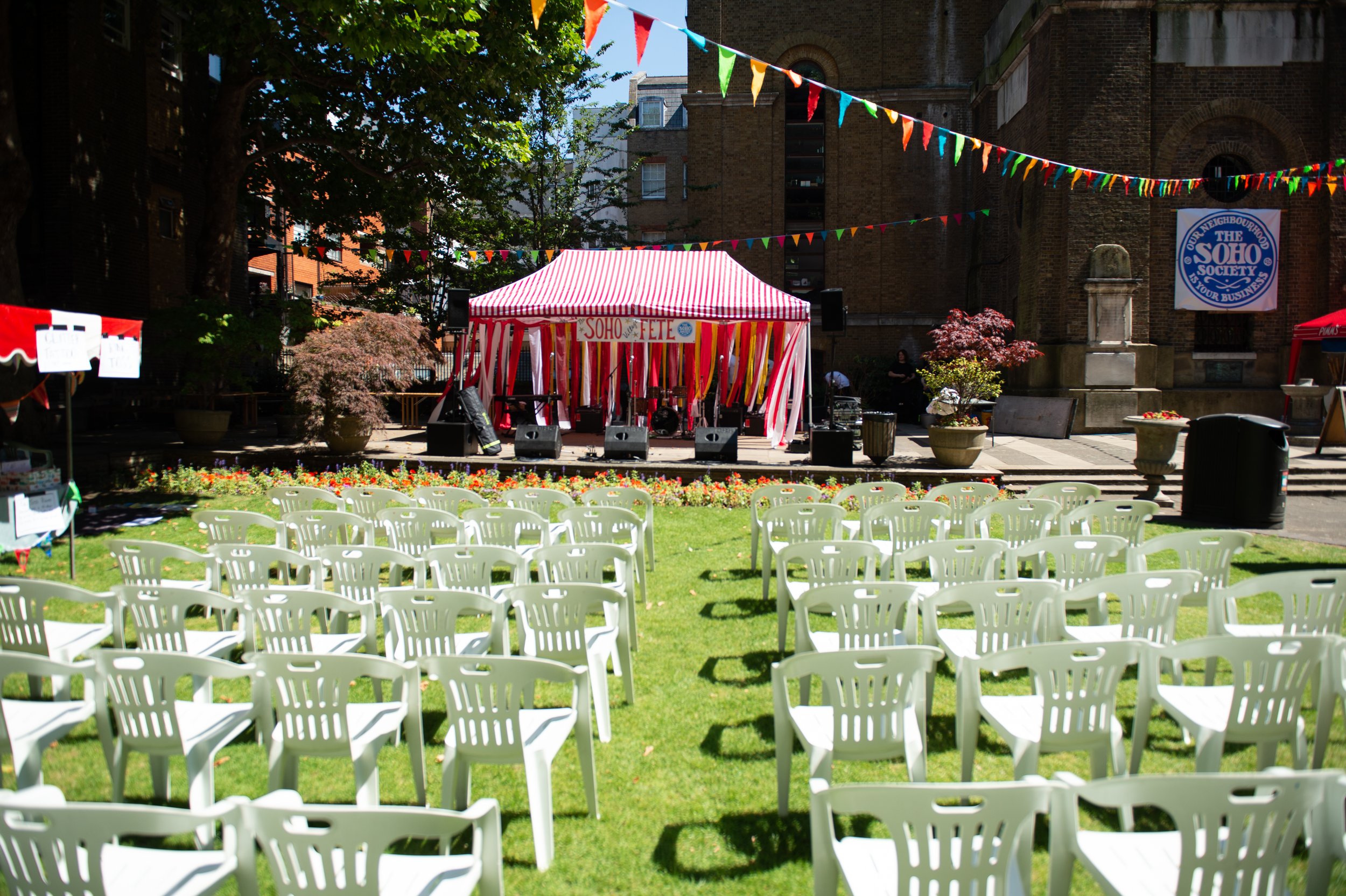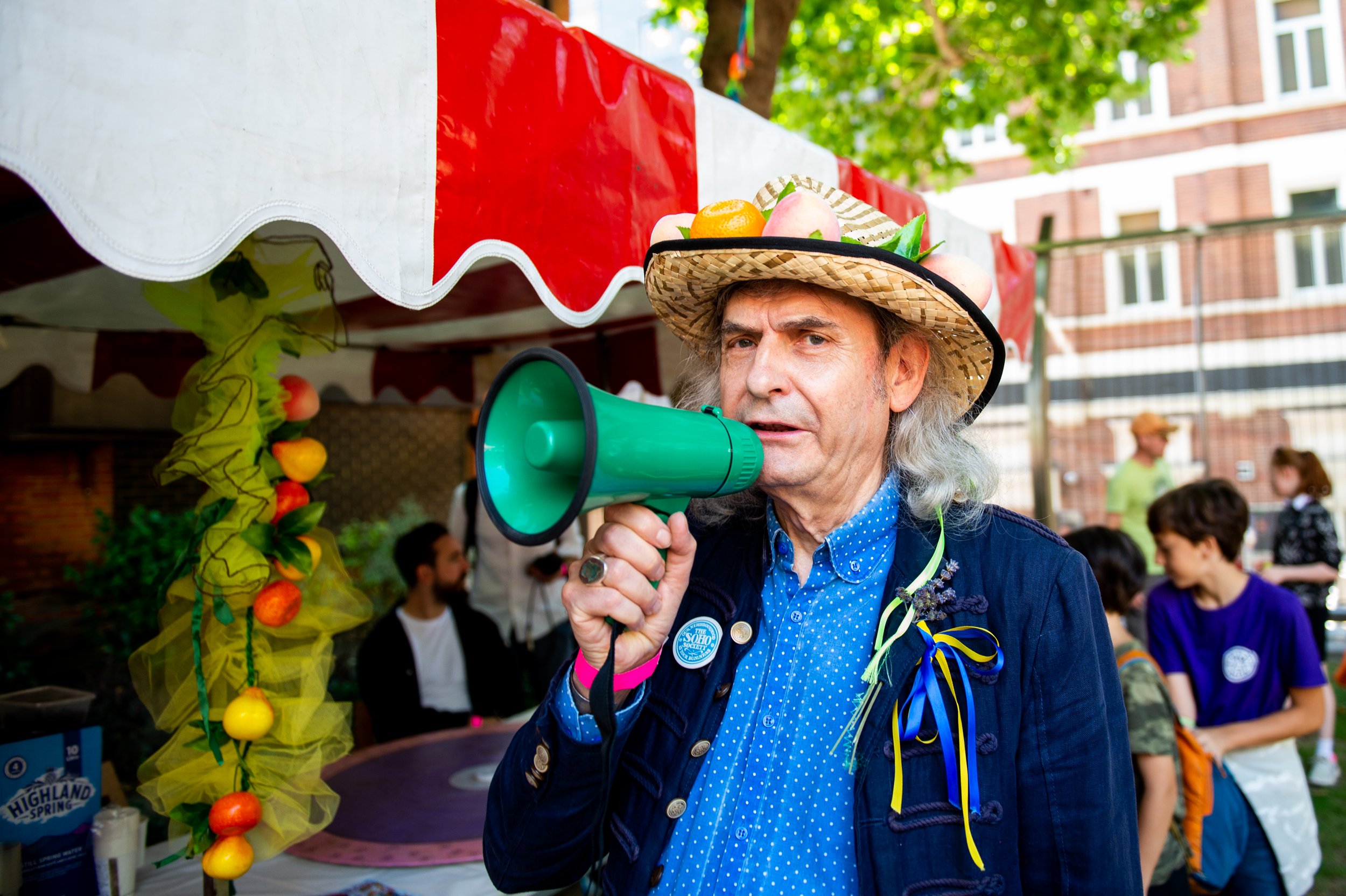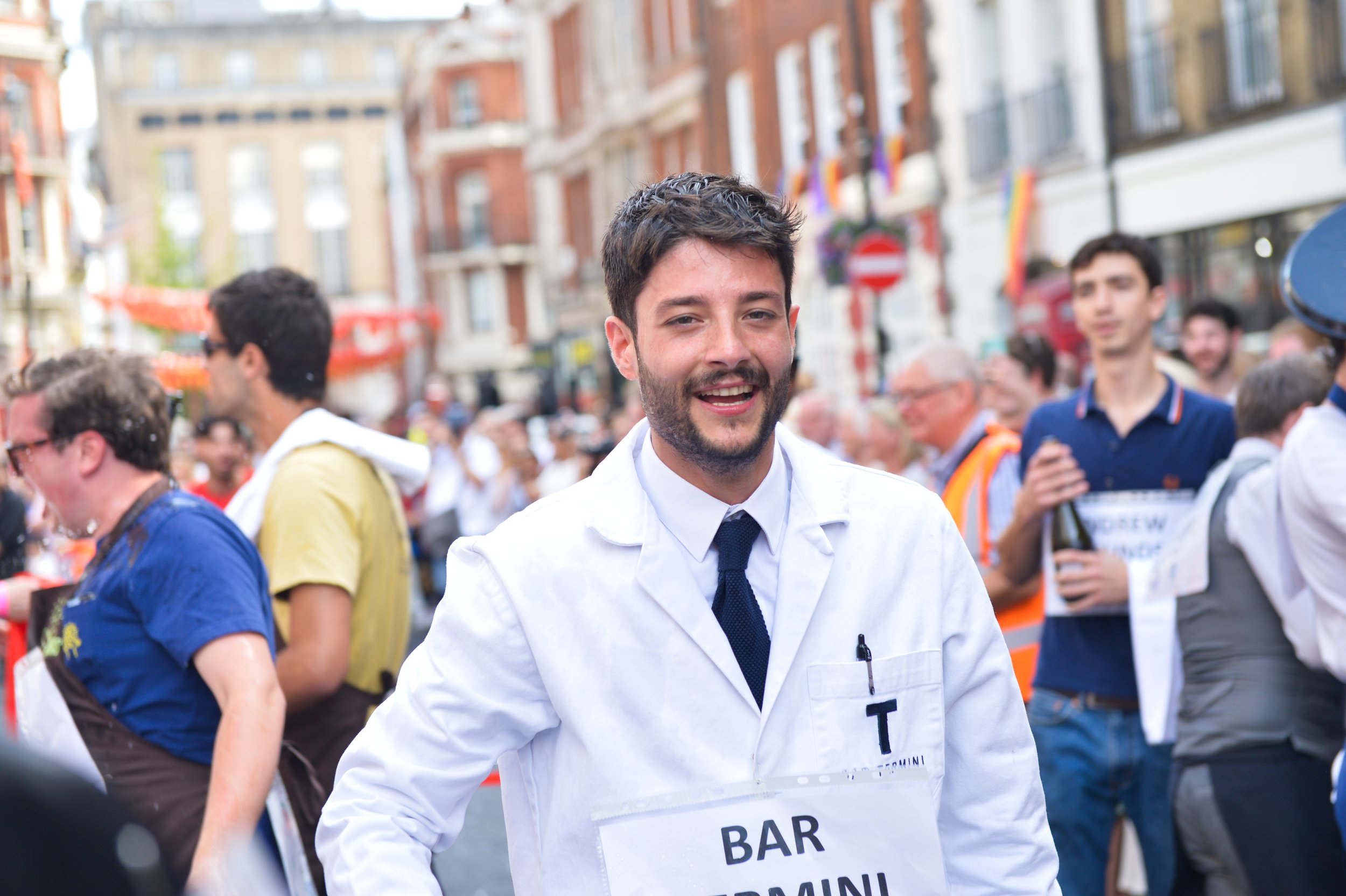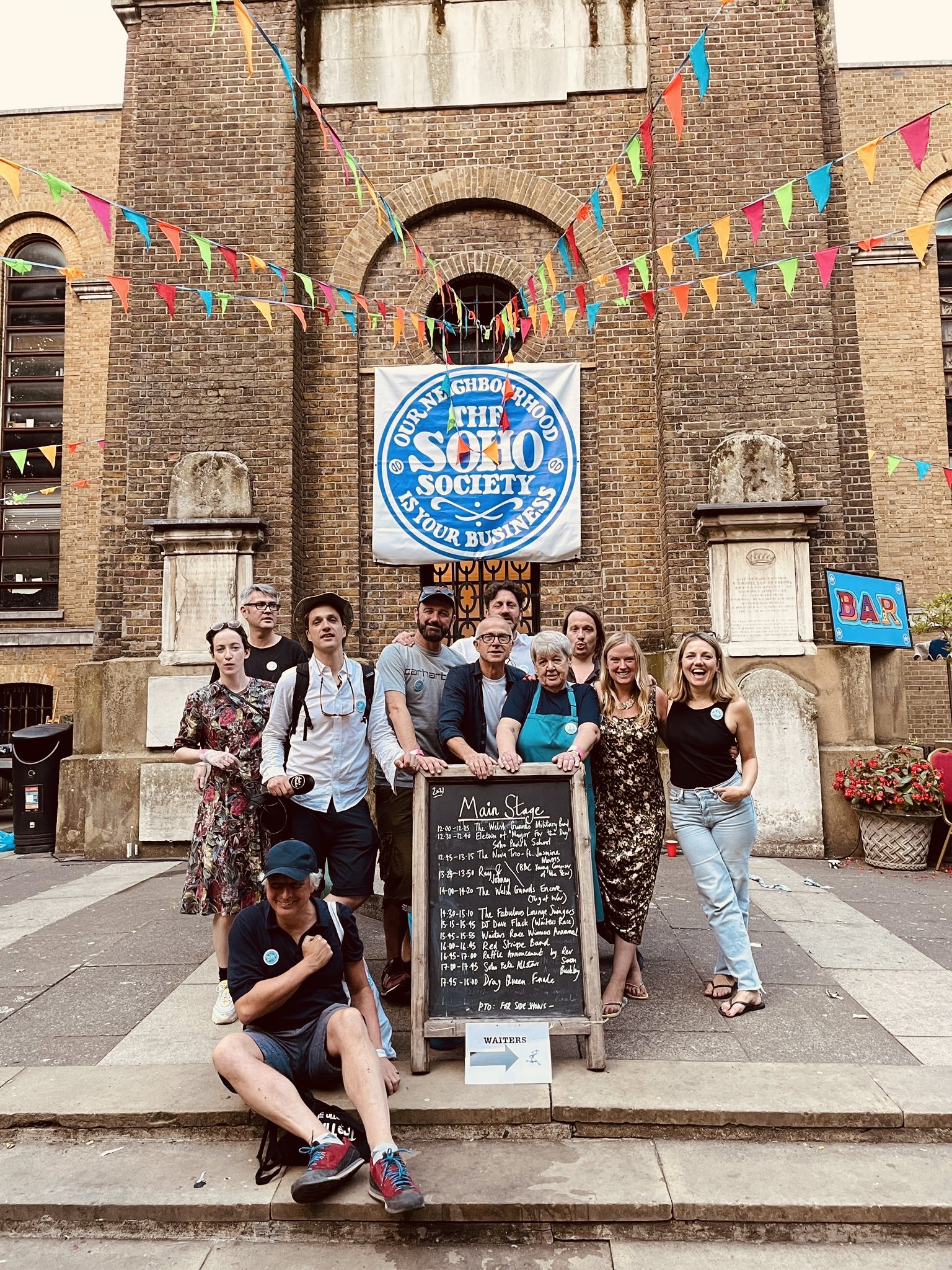Soho Village Fete - Sunday 20 July 2025
The Soho Fete is back with a special 50th celebration. Expect all the usual madness in St Anne’s Gardens from 12 noon, with six hours of live entertainment, French House Bar, snail racing, the Human Fruit Machine, stalls, Soho Police v Soho Fire Tug of War, AND the iconic Soho Waiters race. Can anyone beat three times champion, Endri, from Dean Street Townhouse? Soho Businesses, Volunteers, Stall holders, musicians or enquiries please email the fete committee fete@thesohosociety.org.uk.
Soho Society members have priority entry, join the Soho Society here.
The Soho fete is a free event.
In order to get access please arrive early as the garden has a maximum capacity of 500 people. Priority will be given to Soho Society members with VIP wristbands and then general access. You might have to queue so please be patient.
Please note the Soho fete is a charity event with food and alcohol available inside the gardens. Please do not bring alcohol with you to the gardens, you will not be able to bring these inside the grounds.
Don’t miss! 50th Soho Village Fete on Sunday 20 July 2025 12-6pm, St Anne’s Gardens, Wardour Street, Soho
A traditional Village Fete with a Soho Twist.
The Fete is free to enter with a max capacity of 500 but people arrive and leave throughout the afternoon so if you are prepared to queue up you should get in.
The Fete includes:-
*6 hours live music and The French House Bar!
*Spaghetti Eating Competition
*Dog Show - Entry Form Here
*Tug of War, Soho Police vs Soho Fire Service
*The Soho Waiter’s Race - Register Here
*Raffle Draw - you can buy tickets Here
PLUS Snail Racing & The Human Fruit Machine all Afternoon
All times and events to be confirmed for 2025.
Your best chance if the event is busy is to get there early. There is a maximum capacity in the Gardens of 500 people which we have to stick to no matter how many people show up. Also you are not allowed to bring your own alcohol to the event and security will check this on entry. We keep the Fete free by selling alcohol at the bar. Finally, disabled access is difficult to the Fete as there are steps from Wardour Street. The Church and the Neighbourhood Forum are working on a project to fit a lift but we aren’t there yet.
We are, as ever, looking for volunteers, entertainers and corporate sponsors. Get in touch at fete@thesohosociety.org.uk.
If you would like to volunteer please complete the sign up sheet below.


















